Medicine
Groovy Dentist
"Groovy people should wear groovy clothes," said San Francisco dentist Rodney Pain in 1971. "That way we turn on the whole world."Pain embodied this ideal by doing away with the white tunic typically worn by dentists and always wearing groovy clothes instead.
Dr. Pain sounded familiar, and then I realized that I've posted about him before. He's the same guy who made the news in 1966 because he played bagpipes for his patients while waiting for their fillings to set.
Well, I assume it's the same guy. How many dentists named Rodney Pain could there be in San Francisco?
Note that in the 1966 photo, he isn't yet wearing groovy clothes.

Colorado Springs Gazette - Mar 5, 1971

Dr. Rodney Pain in 1966, playing bagpipes
Posted By: Alex - Sun Sep 27, 2015 -
Comments (5)
Category: Medicine, 1970s
Do You See It?

Do you see an image of a person, place or thing on this brain scan? If so what do you see? If not tell that too. No cheating, only go to the link after you tell us what you see if you see anything at all.
Posted By: Alex - Tue Sep 22, 2015 -
Comments (22)
Category: Ambiguity, Uncertainty and Deliberate Obscurity, Medicine, Brain
Kidney stone-removing bed
Zhu Qinghua, a Chinese rice farmer, has invented a "kidney stone-removing bed." A person is strapped into the bed and hung upside down. Then the entire device vibrates intensely thanks to some kind of tractor engine attached to it.Zhu has been strapping his wife into this thing and claims it's completely cured her kidney stones. [shanghaiist.com]

Posted By: Alex - Tue Apr 14, 2015 -
Comments (8)
Category: Inventions, Medicine
BIG-CAT SCAN
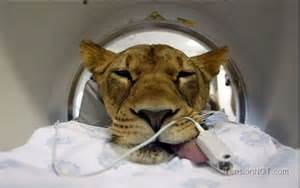
A lion getting a CAT scan!
Posted By: Alex - Sat Mar 21, 2015 -
Comments (1)
Category: Animals, Hospitals, Medicine
Hiccupops

Posted By: Alex - Fri Mar 20, 2015 -
Comments (2)
Category: Inventions, Patents, Medicine
Violet Rays
Good thing they clarified that this was NOT a vibrator. Otherwise someone might have gotten hurt.
Source: Illustrated World, March 1920.
Posted By: Alex - Wed Mar 18, 2015 -
Comments (5)
Category: Medicine, 1920s
Woodward’s Gripe Water
Gripe water is what people used to give to kids to calm them down if they had colic, teething pains, etc. But what exactly was in the stuff? According to wikipedia, the main ingredients were alcohol, dill oil, sodium bicarbonate, sugar, and water. But this ad makes me think there must have been a little something extra in the Indian formulation of the stuff.
via reddit
Posted By: Alex - Fri Mar 06, 2015 -
Comments (11)
Category: Medicine, 1930s
Anti-Vaxxers
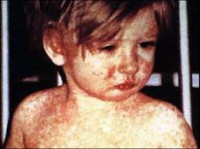
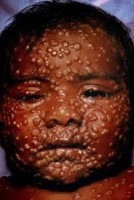
Picture one is a child with measles. Picture two is a child with smallpox. The only study to vilify vaccines has been completely debunked and yet supposedly loving and intelligent parents are denying their children the protection of vaccinations. These people also put others at risk with this irresponsible choice. The scientific community is at a loss as to how to reverse this dangerous trend. Meanwhile pop culture icons weigh in on a subject they have no expertise about and influence decisions that damage society as a whole and children especially.
Government needs to step in for public safety before these diseases take hold in the general population unnecessarily. Parents are being threatened with having their children taken away for letting them walk to the park unaccompanied yet refusing the protection of vaccinations is being allowed. We are down the rabbit hole on this issue.
Posted By: Alex - Wed Mar 04, 2015 -
Comments (25)
Category: Confusion, Misunderstanding, and Incomprehension, Medicine, Surrealism, Can’t Possibly Be True, More Things To Worry About, Diseases, Disease
Young’s Rectal Dilators
These things were widely advertised in newspapers during the early 20th Century, promoted as a "guaranteed cure" for just about everything, but particularly for piles and constipation. As the American Journal of Gastroenterology notes, they do actually have some legitimate medical uses. But in 1940 the federal government sued the Dr. Young company for making misleading claims, and after that the ads stopped appearing in newspapers. Read more about the history of these dilators at The Quack Doctor.

Posted By: Alex - Wed Jan 14, 2015 -
Comments (13)
Category: Medicine
Nervine
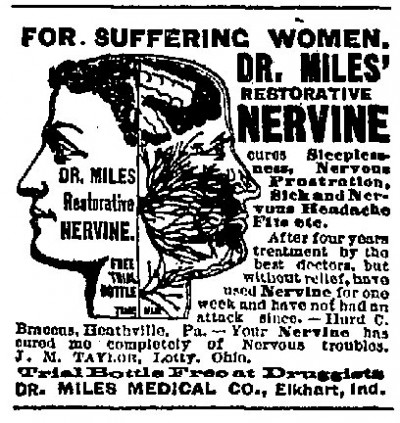
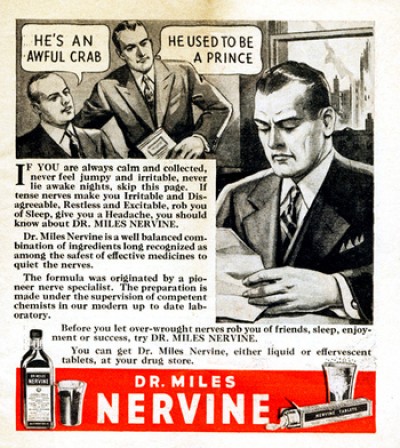
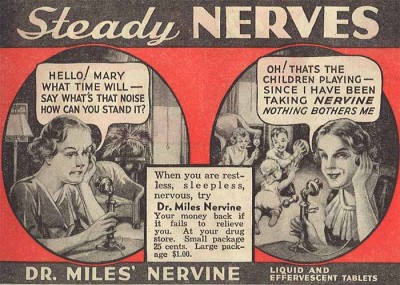
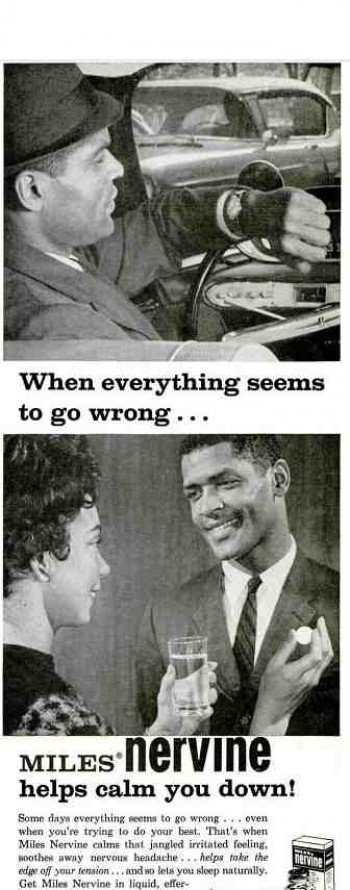
What exactly were the ingredients of Nervine that made it sell effectively for many decades?
Read all about it here.
Posted By: Paul - Sun Nov 16, 2014 -
Comments (7)
Category: Medicine, Nineteenth Century, Twentieth Century

| Who We Are |
|---|
| Alex Boese Alex is the creator and curator of the Museum of Hoaxes. He's also the author of various weird, non-fiction, science-themed books such as Elephants on Acid and Psychedelic Apes. Paul Di Filippo Paul has been paid to put weird ideas into fictional form for over thirty years, in his career as a noted science fiction writer. He has recently begun blogging on many curious topics with three fellow writers at The Inferior 4+1. Contact Us |




